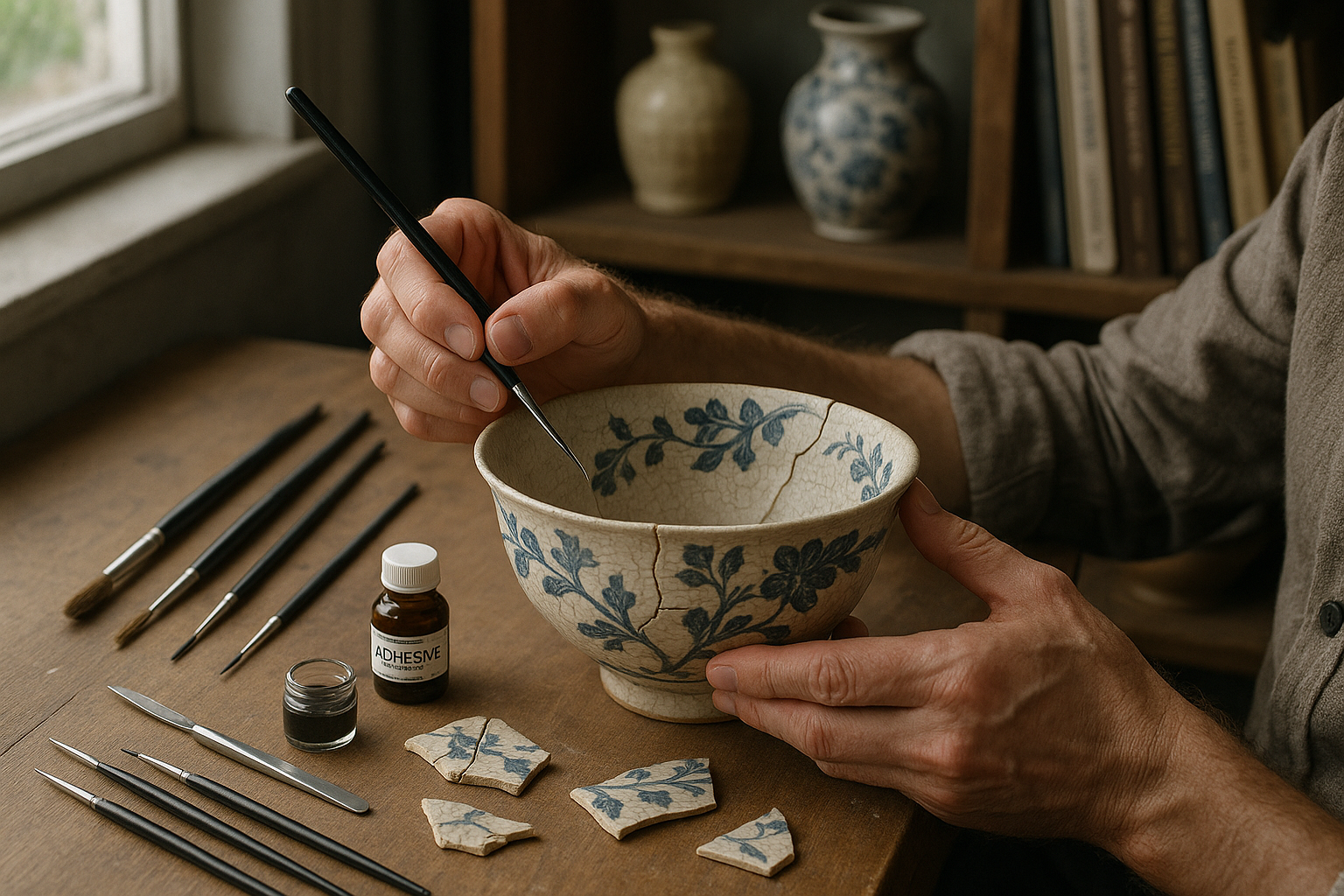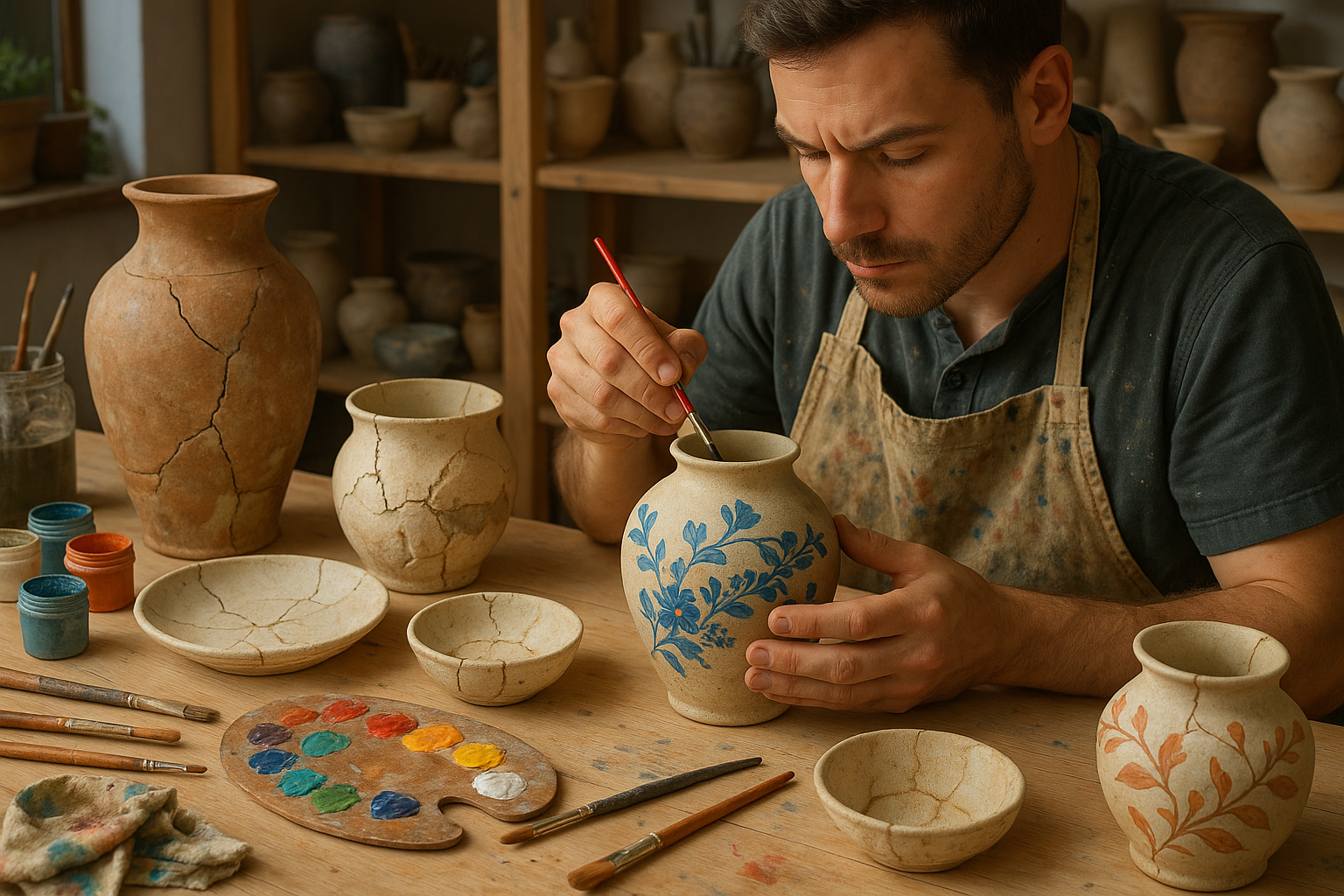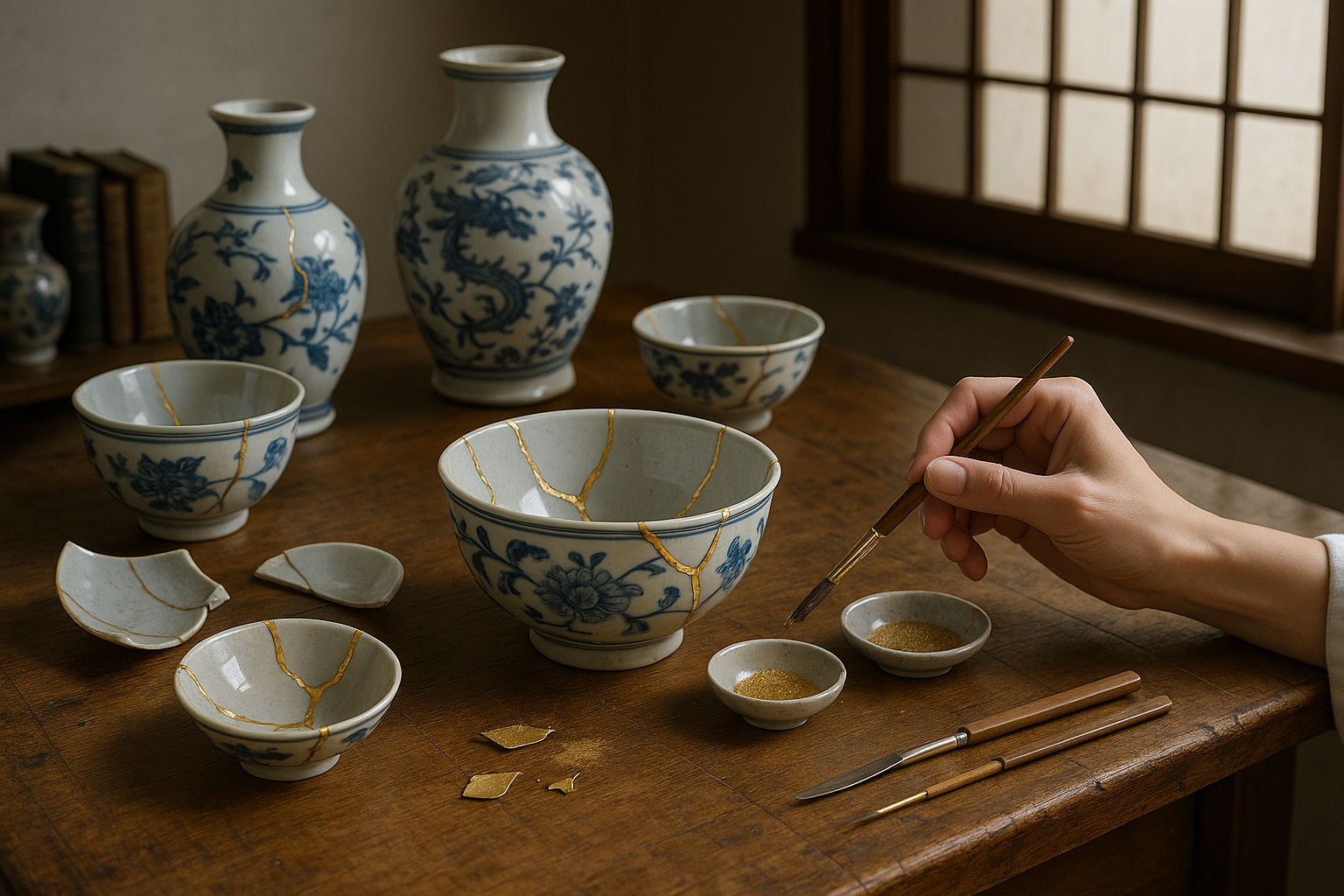In a world that often equates perfection with beauty, it’s refreshing to discover an art form that celebrates the exact opposite. Imagine a technique where flaws are not just acknowledged, but revered and highlighted. Welcome to the mesmerizing world of Kintsugi, the Japanese art of repairing broken pottery with lacquer dusted or mixed with powdered gold, silver, or platinum. This centuries-old practice transforms cracked and shattered objects into unique works of art, adding value and character with each golden seam.
Kintsugi, which translates to “golden joinery,” embodies a philosophy deeply rooted in the acceptance of transience and imperfection. This concept is part of the broader Japanese aesthetic philosophy of wabi-sabi, which finds beauty in the incomplete and impermanent. 🌿 In our article today, we’ll embark on a journey through the history, philosophy, and techniques of Kintsugi, exploring how this ancient practice offers profound lessons for both art and life.
The allure of Kintsugi lies not only in its striking visual results but also in its metaphorical implications. In a society obsessed with newness and flawlessness, Kintsugi encourages us to embrace our scars and imperfections as part of our story. It teaches resilience, the idea that breakage and repair are not merely life events, but opportunities for transformation. This approach to life and art has resonated with many, from artists and collectors to philosophers and everyday individuals seeking deeper meaning in their personal journeys.
As we delve deeper into the topic, we’ll first explore the origins of Kintsugi. Understanding its historical context will provide valuable insights into how this technique has endured and evolved over time. From its inception in the 15th century to its influence on contemporary art, Kintsugi has a rich history worth examining. 📜
Next, we’ll examine the philosophy underpinning Kintsugi. More than just a technique, it’s a mindset that encourages acceptance of change and imperfection. This philosophy challenges the conventional norms of beauty and perfection, advocating for a perspective that finds value in the flawed and the repaired. We’ll discuss how this philosophy can be applied not only to art but also to personal growth and healing.
The heart of our exploration will focus on the techniques of Kintsugi itself. We’ll provide a step-by-step guide on how to master this art form, from selecting the right materials to applying the finishing touches. Whether you’re an artist looking to expand your skillset or a hobbyist seeking a new project, our detailed instructions will help you create your own Kintsugi masterpiece. 🖌️
Moreover, we’ll discuss the modern applications and adaptations of Kintsugi. As the art form gains popularity, artists and designers worldwide are finding innovative ways to incorporate Kintsugi into their work. From fashion and jewelry to interior design, the influence of Kintsugi is expanding, demonstrating its timeless appeal and adaptability. We’ll showcase inspiring examples and interviews with contemporary artists who are pushing the boundaries of this ancient practice.
Lastly, we’ll reflect on the lessons Kintsugi offers for personal and societal growth. In a rapidly changing world, the art of embracing imperfection can offer a refreshing perspective on resilience and adaptability. We’ll explore how adopting a Kintsugi mindset can lead to a more fulfilling and authentic life, encouraging us to see our own “cracks” as opportunities for growth and transformation.
Join us as we uncover the magic of turning imperfections into beauty, and discover how mastering the art of Kintsugi can enhance not only your artistic endeavors but also your approach to life’s inevitable challenges. Whether you’re captivated by the shimmering beauty of the golden seams or inspired by the profound philosophy behind them, Kintsugi offers a wealth of inspiration and wisdom. Let’s embark on this journey together, celebrating the beauty of imperfection and the art of healing. ✨
Conclusion
As we conclude our exploration of Kintsugi, it’s clear that this Japanese art form transcends restoration — it is a profound philosophy of resilience, mindfulness, and renewal. By repairing broken pottery with gold, silver, or platinum lacquer, Kintsugi transforms damage into beauty, turning fractures into radiant symbols of endurance and transformation.
The true mastery of Kintsugi lies in embracing imperfection as part of an object’s story. 🌿💡 Each golden seam represents not loss, but growth — a visible testament to time, care, and the art of healing through creation. Ultimately, mastering Kintsugi is more than a craft — it’s a meditation on acceptance, teaching us that brokenness is not the end, but the beginning of a more meaningful and luminous form of beauty.
Toni Santos is a restoration artist and historical design specialist devoted to reviving the beauty and soul of the past. Through meticulous craftsmanship and a deep respect for heritage, Toni brings antiques back to life—preserving not just objects, but the stories they carry through time. With hands trained in traditional restoration techniques and an eye for age-worn elegance, Toni restores furniture, artworks, artifacts, and heirlooms with precision and reverence. His work reflects a belief that restoration is not correction—it’s conversation between the old and the present. Blending artistry, conservation ethics, and historical research, Toni approaches every piece as a narrative in wood, metal, leather, or fabric—each with scars that speak of eras gone by. Whether repairing a hand-carved chair or reviving a forgotten painting’s vibrance, he respects the integrity of original craftsmanship while honoring its continued life. As the creative force behind Vizovex, Toni shares before-and-after showcases, restoration walkthroughs, and visual essays exploring the techniques and philosophies behind authentic antique revival. His platform celebrates: The timeless value of handcrafted work The quiet artistry of repair and preservation The cultural memory embedded in material objects The delicate balance between age and renewal For collectors, curators, artisans, and lovers of legacy, Toni’s world is an invitation to see restoration not as fixing what’s broken—but as restoring what still lives beneath the dust of time.




